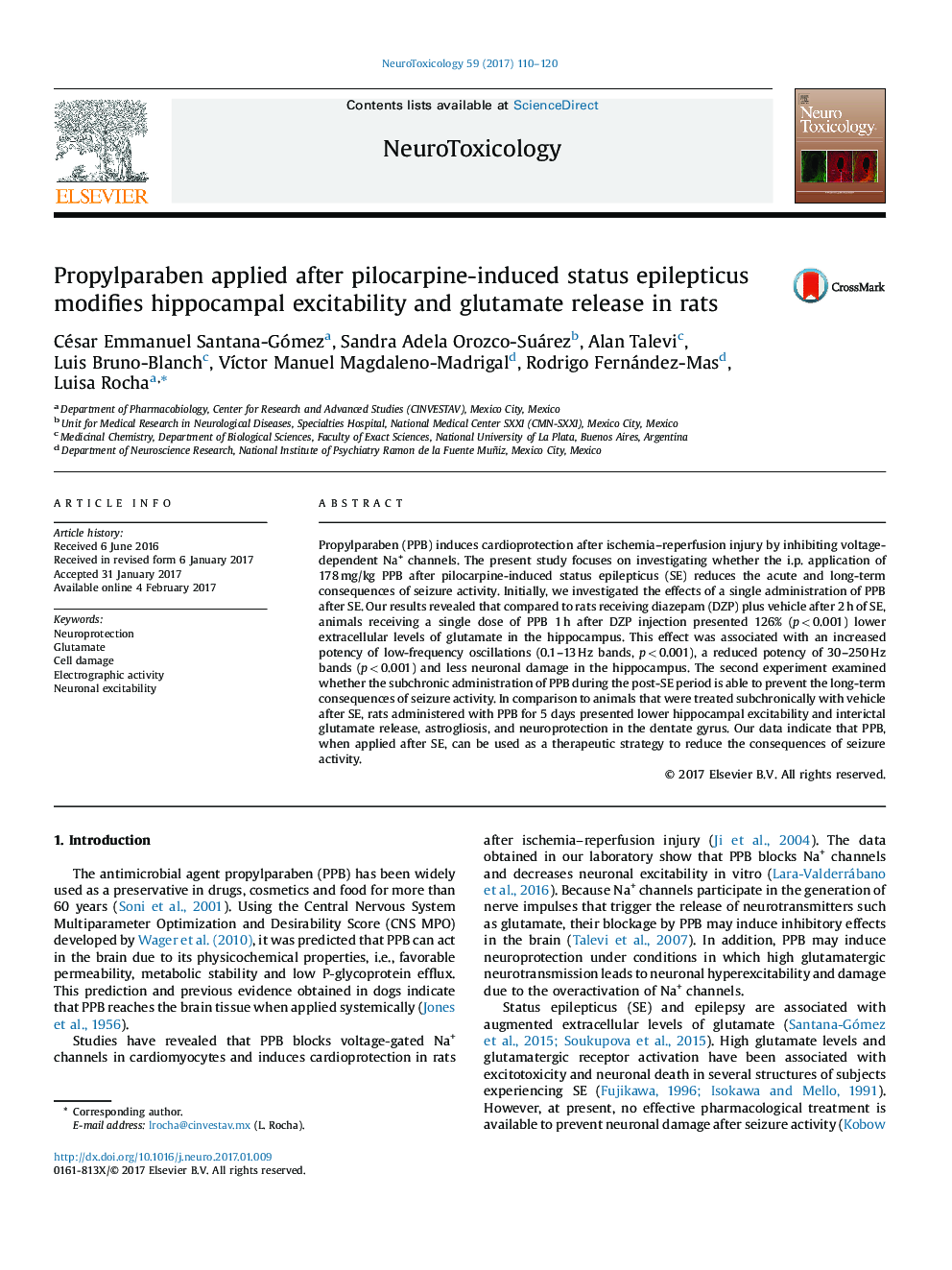| Article ID | Journal | Published Year | Pages | File Type |
|---|---|---|---|---|
| 5560948 | NeuroToxicology | 2017 | 11 Pages |
â¢Propylparaben reduces high glutamate release evoked by seizures.â¢Propylparaben decreases hippocampal neuronal damage.â¢Propylparaben diminishes hippocampal high-frequency oscillations.â¢Propylparaben reduces hippocampal excitability in rats with epilepsy.
Propylparaben (PPB) induces cardioprotection after ischemia-reperfusion injury by inhibiting voltage-dependent Na+ channels. The present study focuses on investigating whether the i.p. application of 178 mg/kg PPB after pilocarpine-induced status epilepticus (SE) reduces the acute and long-term consequences of seizure activity. Initially, we investigated the effects of a single administration of PPB after SE. Our results revealed that compared to rats receiving diazepam (DZP) plus vehicle after 2 h of SE, animals receiving a single dose of PPB 1 h after DZP injection presented 126% (p < 0.001) lower extracellular levels of glutamate in the hippocampus. This effect was associated with an increased potency of low-frequency oscillations (0.1-13 Hz bands, p < 0.001), a reduced potency of 30-250 Hz bands (p < 0.001) and less neuronal damage in the hippocampus. The second experiment examined whether the subchronic administration of PPB during the post-SE period is able to prevent the long-term consequences of seizure activity. In comparison to animals that were treated subchronically with vehicle after SE, rats administered with PPB for 5 days presented lower hippocampal excitability and interictal glutamate release, astrogliosis, and neuroprotection in the dentate gyrus. Our data indicate that PPB, when applied after SE, can be used as a therapeutic strategy to reduce the consequences of seizure activity.
Graphical abstractDownload high-res image (193KB)Download full-size image
